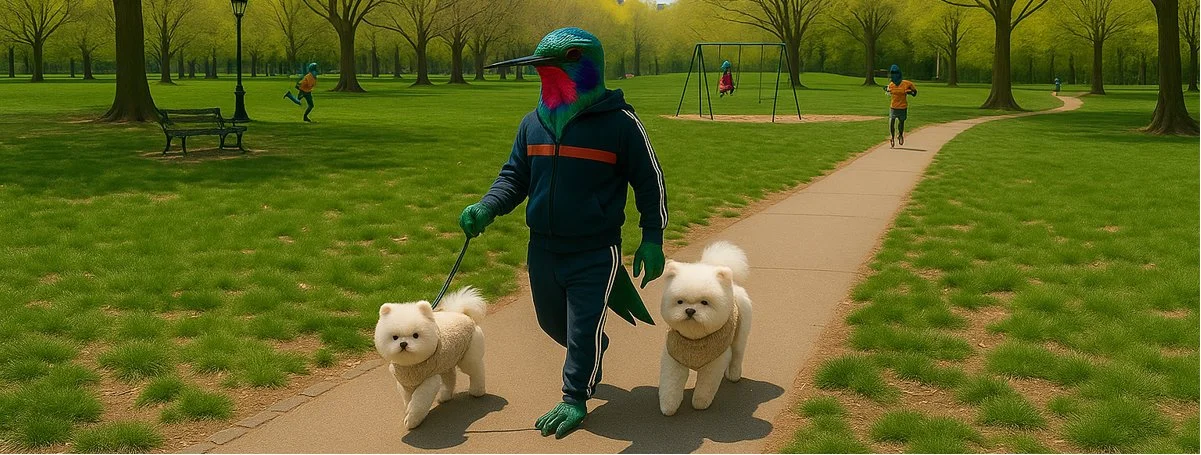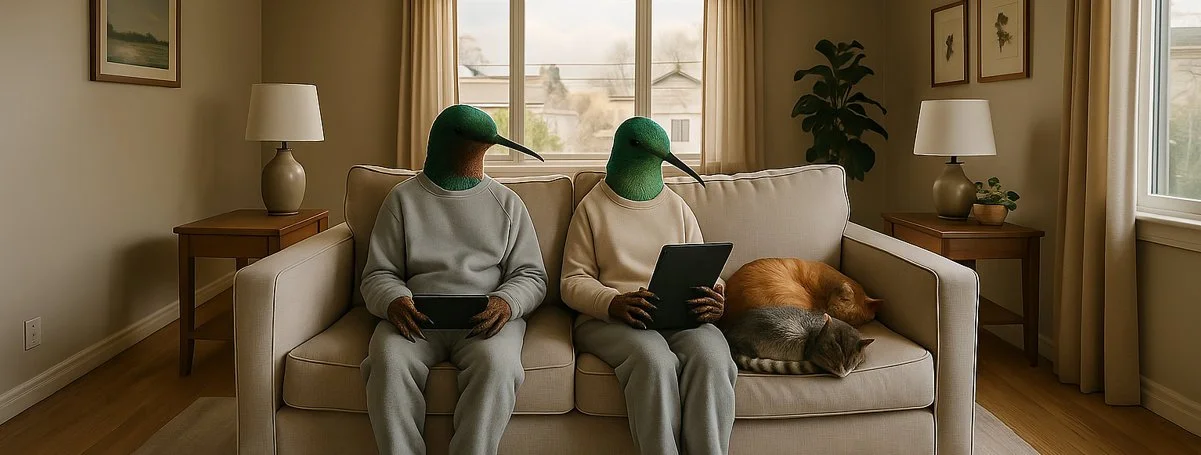The Pet Economy in 2026: The Trends Every Brand Needs to Prepare For Now
The pet category isn’t slowing down — it’s evolving. Fast.
Even as other consumer sectors face softness or uneven recovery, pet parents continue to spend with conviction. Pets are family, and family spending has a different elasticity.
In 2026, the pet economy enters a new phase: premium, proactive, and deeply emotional. For pet marketers, this isn’t just an opportunity, it’s a shift in how the category communicates, innovates, and earns trust.
Let’s take a sharp look at the forces shaping the next 12–18 months.
🧭 “Premium-ization” Keeps Climbing (and Fragmenting)
Pet owners continue trading up — not just in food, but across every subcategory.
What’s growing fastest:
Human-grade and fresh frozen foods
Functional treats (mobility, calming, skin/coat)
Supplements and toppers
Specialized formulas for breed, age, and sensitivity
Natural chews replacing rawhide
41% of dog owners purchased premium dog food in 2024, up 5% from 2023 (APPA 2025 Dog & Cat Report)
53% of dog owners give their dogs vitamins or supplements, showing strong adoption of functional/wellness-driven products (APPA via PetFoodProcessing)
And “premium” isn’t a single idea now — it’s a mix of very specific benefits.
Whirr POV:
Messaging must shift from “better ingredients” to specific emotional outcomes.
Pet parents don’t buy fresh food — they buy reassurance.
🧠 Health & Wellness Has Become the New Hero Category
Pet health has become intensely proactive, mirroring human wellness trends.
Key signals:
Pet insurance enrollments rose ~12% YoY in 2024
U.S. veterinary services spending reached $32.7B in 2021, growing ~31% year-over-year
Vet-services inflation recently hit ~7.8% YoY, driving higher care costs
Search interest for “dog probiotics” grew 46% in 12 months
DNA testing and breed-relevant diets are surging
Wellness isn’t a niche subcategory anymore — it’s the new center of gravity.
Whirr POV:
We think the pandemic accelerated this
Trusted content matters
Educational media (short-form explainers, vet-backed messaging, transparent benefit breakdowns) outperforms hype in this space
📱 Pet Parents Spend Their Time on Social + Search
Where they spend their attention:
Pet creators and influencers:
Approximately 63% of pet owners follow at least one pet influencer on Instagram or TikTok, a testament to how creator-led content shapes product discovery and brand affinity
High-engagement content:
Pet-focused creators average ~5% engagement rates, beating the general influencer benchmark of ~2.4%, underscoring how deeply pet parents connect with relatable, pet-centered storytelling
Search-driven journeys:
More than 88% of mobile users search for pet-care information, and 62% say online search influenced their final choice of veterinary provider — a clear indicator of how solutions-based search drives decisions
Short-form video habits:
YouTube usage for discovering new pet products grew from 35% to 45%, and Instagram from 21% to 32% within just four years — proving that vertical video and creator education are accelerating category awareness
Review and user-generated content consumption:
From product reviews to “day-in-the-life” enrichment content, pet parents rely heavily on shared experiences, real testimonials, and creator recommendations before purchasing
Whirr POV:
Top-funnel creative should blend utility, identity, and emotion, tapping into the way pet parents learn, search, and share
Mid-funnel strategy should emphasize clarity, comparison, and confidence, helping pet owners make informed choices in a category where trust matters and decisions feel personal
At the moment of choice, creative should act like a nudge, not a story, focusing on credibility and the single outcome pet parents want most
🏪 Retail Media Becomes Table Stakes
The rise of Amazon, Chewy, Walmart Connect, and Petco Media Network continues to shift how brands win visibility and influence purchase decisions.
But here’s the nuance: New customer acquisition is flattening as competition accelerates.
Success now requires:
Creative differentiation
Consistent presence
Messaging specifically built for retail shoppers
A coordinated view of search, retail media, and reviews
Whirr POV:
Success requires ads and placements that stand out, especially in-store, and ongoing frequency to maintain momentum
Retail creative must be very different than social ads
Different mindset
Different mission
Lower-funnel
🧩 The Emotional Arc Is Everything
Pet purchases aren’t rational; they’re relational.
Every category — from calming chews to kitty litter — is powered by emotion.
Brands win when they tap into:
Feeling like a “good pet parent”
Reducing worry
Increasing comfort
Strengthening the bond
Celebrating personality
This is why “cute” still works — but only when paired with clarity.
Whirr POV:
Emotional insight fuels attention
Clarity drives conversion
Pet marketers need both
✳️ The Whirr View
The pet economy of 2026 is defined by:
Premium expectations
Proactive wellness
Search-informed decisions
High emotional stakes
Creative differentiation inside crowded retail ecosystems
The brands that break through will be the ones that move beyond category clichés and design marketing that’s useful, empathetic, and strategically simple.
Whirr helps pet brands connect the dots — through clarity, consistency, and storytelling that respects the human-pet bond at the center of it all.
Reach out today to discuss how Whirr’s insights can propel your brand, whether in the pet space or not, to new heights!
References
North American Pet Health Insurance Association (NAPHIA) – Industry Data (2024): https://naphia.org/industry-data/
Pet Business Professor – U.S. Veterinary Services Spending (2021): https://petbusinessprofessor.com/petmarket/petmarketsegments/2021-u-s-veterinary-services-spending-32-67bup-↑7-82b/
Bureau of Labor Statistics – Pet-Care Industry Overview: https://www.bls.gov/opub/btn/volume-13/a-tail-of-productivity-in-pet-care-services-new-technology-enables-rapid-growth.htm
Pet Food Industry – Veterinary Inflation Report (2025): https://www.petfoodindustry.com/pet-food-market/article/15770287/petflation-surges-to-35-in-september-report
InBeat – Pet Influencer Marketing: Complete Guide for 2025 (Reports that roughly 63% of pet owners follow at least one pet influencer on Instagram or TikTok): https://www.inbeat.co/articles/pet-influencer-marketing/
Impact / Sprout Social – Pet Influencer Marketing Insights (2025) (Finds that pet-category creators average ~5% engagement, outperforming general influencer benchmarks): https://impact.com/influencer/pet-influencer-marketing/
Pet Food Processing – APPA Consumer Trend Insights (2023) (Shows YouTube use for pet product discovery climbed from 35% (2018) to 45% (2022), and Instagram from 21% to 32%):
LifeLearn – Pet Owner Search Behavior (2025) (Reports that 88% of mobile users research pet-care information online, and 62% say search influenced their veterinary provider choice): https://www.lifelearn.com/2025/07/08/how-local-search-behavior-is-changing-pet-owner-decision-making/









